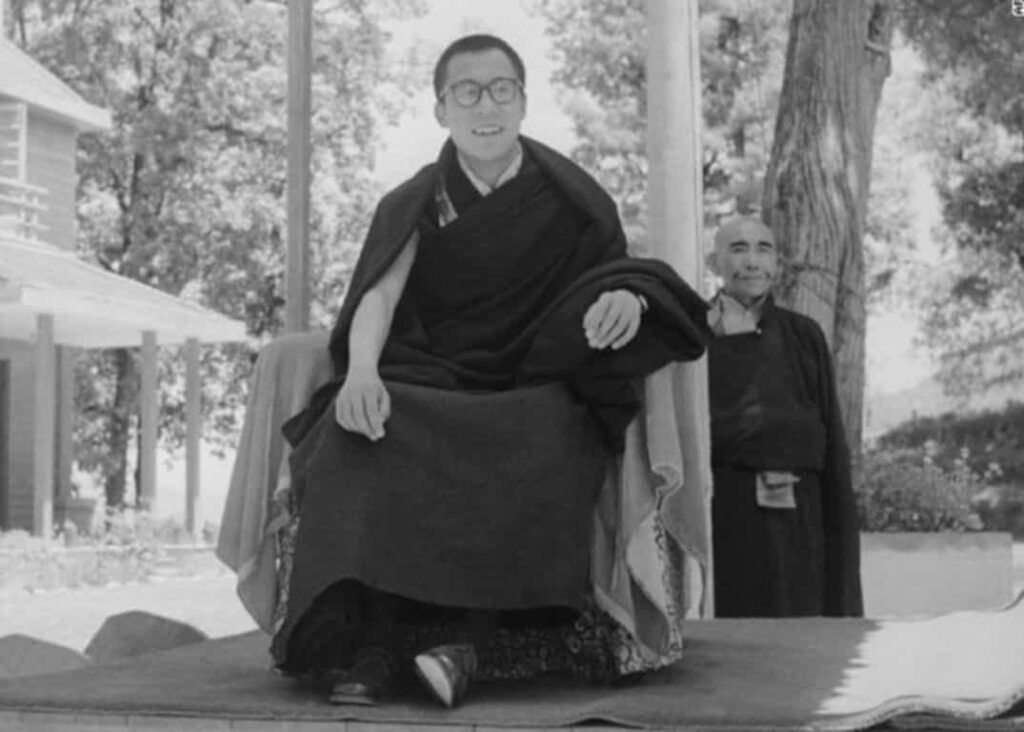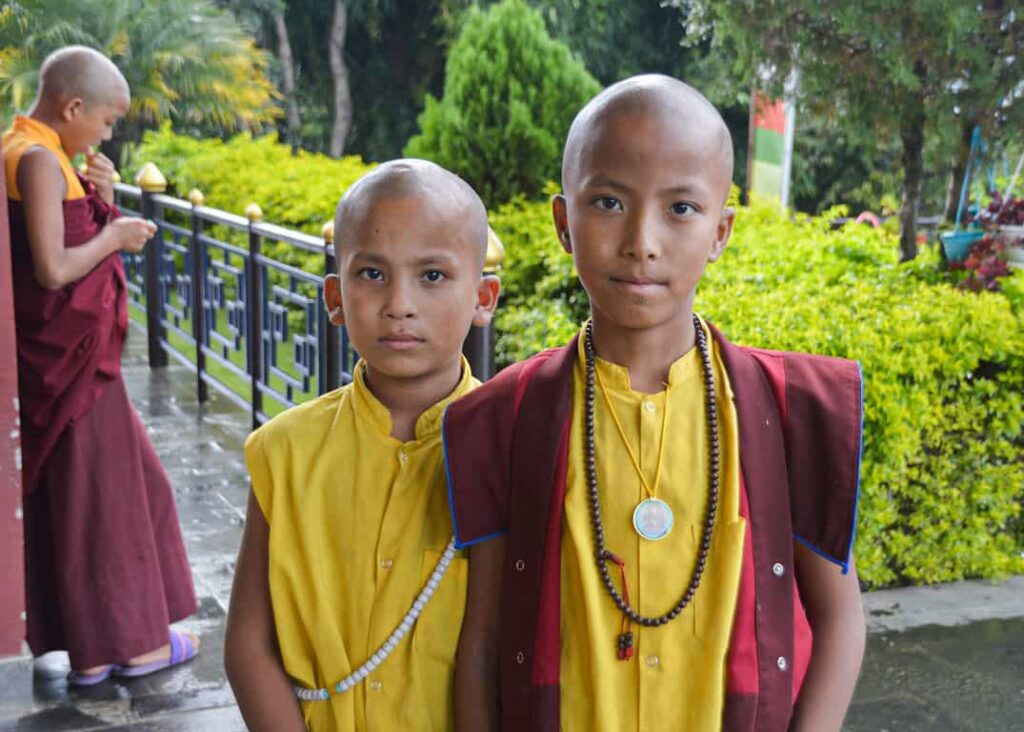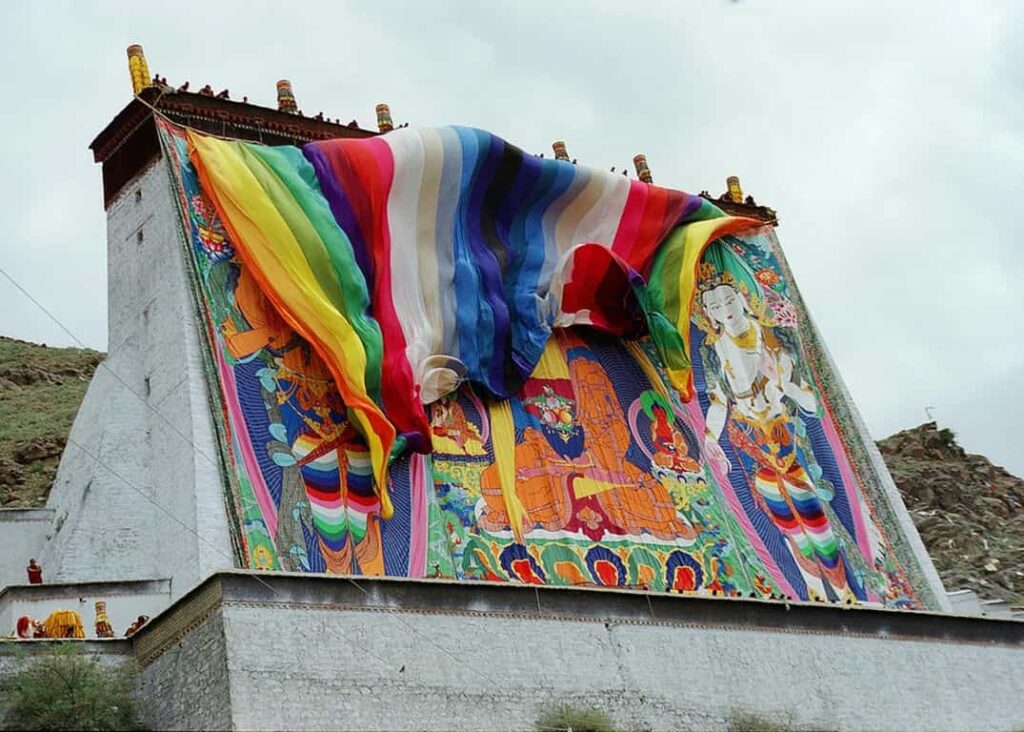Tashilhunpo Monastery was founded in 1447 by the Dalai Lama. It became the seat to the Panchen lama who is the second most important spiritual leader of Tibet. It is located in Shigatse, the second-largest city in Tibet. The monastery has impressive architecture and vibrant spiritual energy that makes it more special.
The relationship between the Dalai Lama and Panchen Lama is novel. Each Lama in his lifetime is not involved in the search for the other’s reincarnation but also assumes the role, first as the disciple and later in his life as the guru of the other.
The Tashilhunpo Monastery allowed a holding environment and a robust learning community where monks received good education and skills. The Tashilhunpo Monastery develops as the center of learning. The monastery played a vital role in the preservation of Mahayana Buddhist philosophy and practice. By 1995, 5000 monks resided in the monastery in Shigaste, Tibet. In addition, 2000 monks came from outside Tibet.
Chinese Invasion and Dalai Lama
Starting to Follow the Chinese invasion of Tibet and the subsequent destruction caused by the cultural revolution it was never the same. Only 400-500 monks remained in the monastery. 10th Panchen lama could not leave Tibet. As a result, many of the senior lamas from Tashi Lhunpo Monastery remained with him, without the guidance of the Panchen lama and the senior lamas, Tashi Lhunpo monastery was at a huge disadvantage, and could not reestablish and progress in exile with place and remained one of the poorest of the reestablished monasteries in exile.

In 1972, the guidance of his holiness the Dalai lama and with decision of the senior monks. the monastery was re-established in Bylakuppe, Karnataka state in south India. The monastery continues to follow the same tradition and principles practiced in Tibet with renewed energy with the encouragement and support from his holiness Dalai lama, today, Tashi Lhunpo is once again picking up and becoming one of the major centers of Tibet Buddhist study and practice in India.
The Guiding Principles Of Tashi Lhunpo Monastery
To allow a sense of authority and service
The Tashilhunpo Monastery encourages the monks to acquire the skill and wisdom to be responsible and serve others with a sense of vision through focused learning and practice of Buddhist philosophy coupled with modern subjects.
Also Read: Tengboche Monastery: The oldest monastery in Khumbu
To maintain peace and harmony
The monastery ventures to maintain peace and harmony within the individual and with the world at large, to be sensitive to the environment of others by following the guidance and the words said by his holiness the Dalai lama and the Panchen lama.
To be good human beings
The Tashilhunpo Monastery provides a holding environment and cares for and protects the monks to flower into loving and kind human beings.

Prominent Chapel
Chapel of Jampa an entire building houses 26m figures of Jampa (Maitreya), The world’s largest statue of the future Buddha.
Victory Chapel
It is a center for philosophy and houses a large statue of Tsongkhapa flanked by his two disciples, and also Jampa and Jampelyang.
Tombs of the Monastery
The tomb of the 10th Panchen Lama
The tomb of the 10th Panchen Lama is a dazzling gold-plated funeral chorten. A statue of the 10th Panchen lama, who died in 1889, is displayed atop the tomb. The ceiling of the chapel is painted with a Kalachakra mandala, with a mural of the deity on the left wall, and the walls are painted with gold buddhas in various mudras.
Tomb of the Fourth Panchen Lama
Tomb of the fourth Panchen Lama, Lobsang Choekyi Gyeltsen, teacher of the fifth Dalai Lama. This was the tomb at Tashilhunpo to be spared during the Cultural Revolution. The 11m-high funerary chorten is inlaid with semiprecious stones and contains 85kg of gold.
You may also like: Kopan Monastery
The Kelsang temple is a remarkable collection of buildings with its centerpiece large country and the focus of festivals and monastic activities. it’s a fascinating place to sit and watch the pilgrims and monks go about their business. Monks come together here before their lunchtime service in the main assembly hall. A huge prayer pole stern from the center of the flagged courtyard and the surrounding walls are painted with buddhas. Pilgrims put their ears up to a shrine of Drolma, who is said to have the power of speech.
Assembly Hall
The assembly hall is one of the oldest buildings in Tashilhunpo, from the 15th-century founding of the monastery. The great throne that influences the center of the hall is the throne of the Panchenlamas. The hall is a dark, moody place, with a row of mounts for monks, and long thangkas, representing the various manifestations of the Panchen lama, suspended from the ceiling. The central inner chapel holds a wonderfully ornate statue of Sakyamuni, while the chapel to the right holds several images of Drolma.
Tomb stupas of Panchen lama, from fifth to ninth
The stupas were constructed by the tenth Panchen lama to keep the reclusive hermit from the stupas destroyed during the Cultural Revolution. Stupa was made by Panchen lama before few days after his death in 1989.
Tashilhinpo monastery thangka festival
Thangka festival is the most important festival in Tibet. It is also called as Buddha Exhibition Festival. A major festival in which one of the famous giant thangka paintings is unveiled for the devoted crowds of people that gather. it is an amazing festival with awesome sights and sounds, and a great way to learn more about Tibetan culture.

The word thangka means -things that one unrolls- the use of cloth for the thangka paintings and the fact that they are rolled up for storage until the next event. The thangka would originally serve as a teaching instrument for monks and was mostly made on smaller pieces of cloth. The thangkas would depict images from the life of Buddha or one of the famous Buddhist masters, as well as the Buddhist gods, and would be instrumental in teaching Buddhism to uneducated people and monks. The teaching would often include a ritual or ceremony, that would be used as a medium for people to offer prayers and thanks or make requests.
The first event was held in 1447 by the first Dalai lama, Gedun Drupa. The event was held as a celebration of the completion of the monastery.
Let our expert team at Asian Heritage Treks and Travel take care of everything — from guided tours to personalized packing tips and travel arrangements.
Plan a fun adventure







